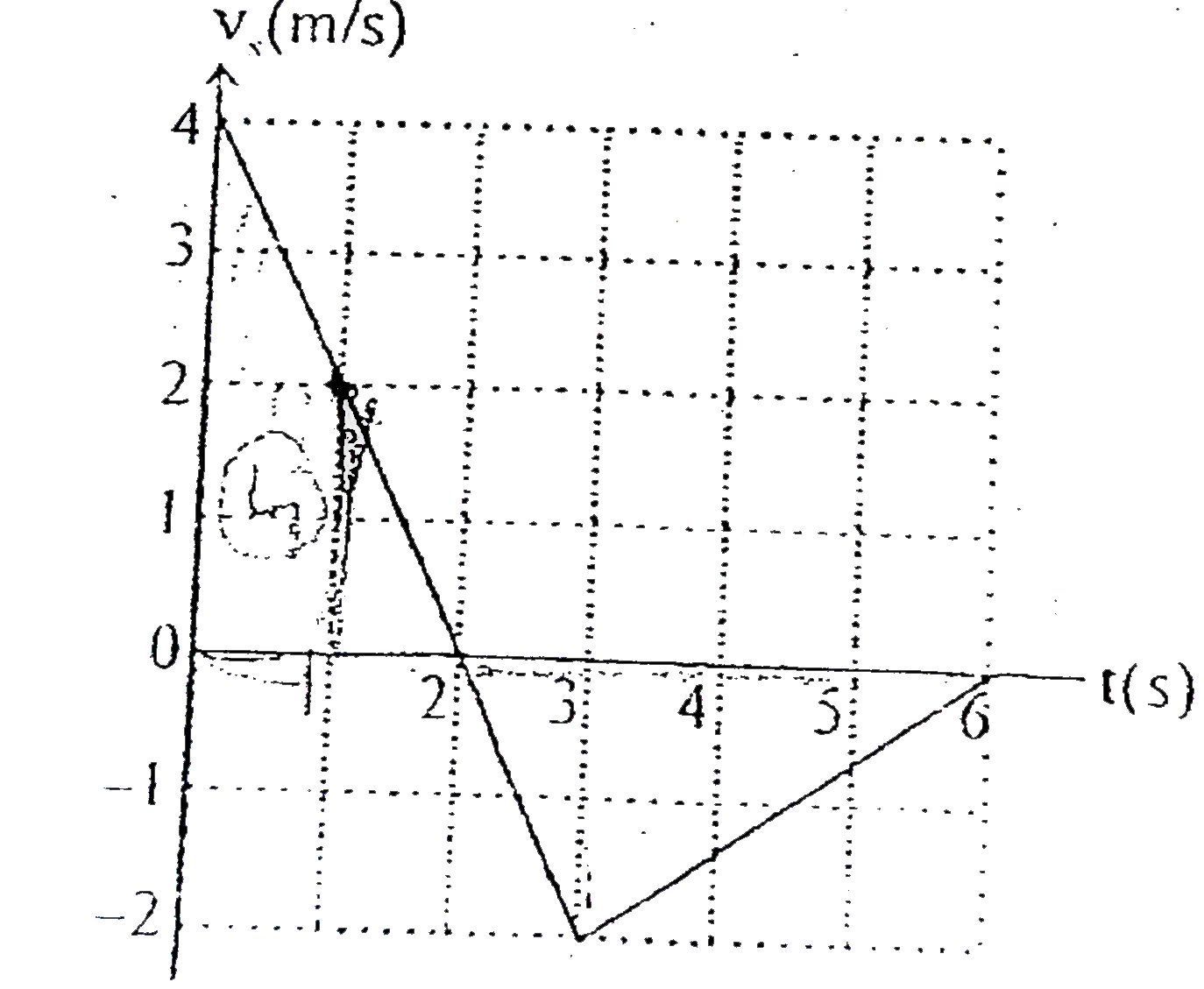A particle moves along the X-axis as x=u(t−2s)+a(t−2s)2.
the initial velocity of the particle is u
the acceleration of the particle is a
the acceleration of the particle is 2a
at t=2 s particle is at the origin.
The correct Answer is:C, D
To solve the problem step by step, we need to analyze the given position function of the particle and derive the necessary quantities: initial velocity, acceleration, and position at a specific time.
Step 1: Understand the Position Function
The position of the particle is given by:
x=u(t−2s)+a(t−2s)2
Step 2: Find the Velocity
To find the velocity, we differentiate the position function with respect to time t:
v=dxdt=ddt(u(t−2)+a(t−2)2)
Using the product and chain rules:
1. The derivative of u(t−2) is u.
2. The derivative of a(t−2)2 is 2a(t−2).
Thus, the velocity v becomes:
v=u+2a(t−2)
Step 3: Find the Acceleration
To find the acceleration, we differentiate the velocity with respect to time t:
a=dvdt=ddt(u+2a(t−2))
The derivative of u (a constant) is 0, and the derivative of 2a(t−2) is 2a. Therefore, the acceleration a is:
a=2a
Step 4: Check the Position at t=2s
We need to find the position of the particle at t=2s:
x(2)=u(2−2)+a(2−2)2
This simplifies to:
x(2)=u(0)+a(0)2=0+0=0
Step 5: Determine Initial Velocity
To find the initial velocity at t=0:
v(0)=u+2a(0−2)
This simplifies to:
v(0)=u−4a
Summary of Results
1. The initial velocity is u−4a, which is not equal to u.
2. The acceleration is 2a.
3. At t=2s, the particle is at the origin (position x=0).
Conclusion
- The initial velocity of the particle is not u (it is u−4a).
- The acceleration of the particle is 2a.
- At t=2s, the particle is at the origin.
The position of the particle is given by:
x=u(t−2s)+a(t−2s)2
To find the velocity, we differentiate the position function with respect to time t:
v=dxdt=ddt(u(t−2)+a(t−2)2)
1. The derivative of u(t−2) is u.
2. The derivative of a(t−2)2 is 2a(t−2).
v=u+2a(t−2)
To find the acceleration, we differentiate the velocity with respect to time t:
a=dvdt=ddt(u+2a(t−2))
a=2a
We need to find the position of the particle at t=2s:
x(2)=u(2−2)+a(2−2)2
This simplifies to:
x(2)=u(0)+a(0)2=0+0=0
To find the initial velocity at t=0:
v(0)=u+2a(0−2)
This simplifies to:
v(0)=u−4a
1. The initial velocity is u−4a, which is not equal to u.
2. The acceleration is 2a.
3. At t=2s, the particle is at the origin (position x=0).
- The initial velocity of the particle is not u (it is u−4a).
- The acceleration of the particle is 2a.
- At t=2s, the particle is at the origin.
Topper's Solved these Questions
- REST AND MOTION : KINEMATICSBOOK - HC VERMA ENGLISHCHAPTER - REST AND MOTION : KINEMATICSEXERCISE - Exercises
51 Videos
- REST AND MOTION : KINEMATICSBOOK - HC VERMA ENGLISHCHAPTER - REST AND MOTION : KINEMATICSEXERCISE - Question for short Answer
13 Videos
- REST AND MOTION : KINEMATICSBOOK - HC VERMA ENGLISHCHAPTER - REST AND MOTION : KINEMATICSEXERCISE - Objective -1
13 Videos
- PHYSICS AND MATHEMATICSBOOK - HC VERMA ENGLISHCHAPTER - PHYSICS AND MATHEMATICSEXERCISE - Question for short Answer
14 Videos
- ROTATIONAL MECHANICSBOOK - HC VERMA ENGLISHCHAPTER - ROTATIONAL MECHANICSEXERCISE - Questions for short Answer
21 Videos
Similar Questions
A particle moves along the X-axis as x=u(t−2s)=at(t−2)2.
View SolutionA particle moves along x-axis as x=4(t−2)+a(t−2)2
Which of the following is true?
View SolutionA particle moves along the x-axis in such a way that its x-co-ordinate varies with time as x=2–5t+6t2.
The initial velocity and acceleration of particle will respectively be-
View SolutionA particle moves along the x - axis according to x=A[1+sinωt]. What distance does is travel in time interval from t=0 to t=2.5π/ω ?
View SolutionVx is the velocity of a particle of a particle moving along the x−axis as shown. If x=2.0m at t=1.0s, what is the position of the particle at t=6.0s?

View Solutionx-coordinate of a particle moving along this axis is x=(2+t2+2t3). Here, x is in meres and t in seconds. Find (a) position of particle from where it started its journey, (b) initial velocity of particle and (c) acceleration of particle at t=2s.
View SolutionA particle moves on x-axis as per equation x=(t3−9t2+15+2)m. Distance travelled by the particle between t=0 and t=5s is
View SolutionA particle moves along x-axis such that its position veries with time as x=50t−5t2. Select the correct alternative (s).
View SolutionA particle is moving along the x-axis with its cordinate with time 't' given by x(t)=10+8t−3t2. Another particle is moving along the y-axis with its coordinate as a function of time given by y(t)=5−8t2 At t=1 s, the speed of the4 second particle as measured in the frame of the first particle is given as √v. Then v (in m//s) is
View SolutionIf the velocity of a particle moving along x-axis is given as v=(3t2−2t) and t=0, x=0 then calculate position of the particle at t=2sec.
View Solution
